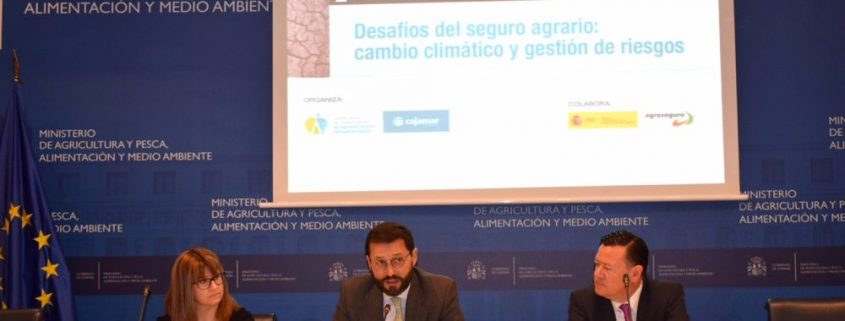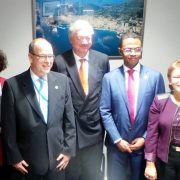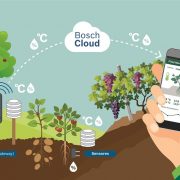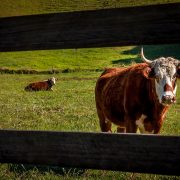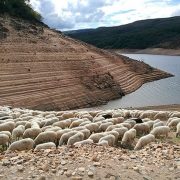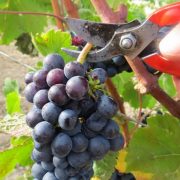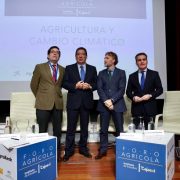Climate change redirects the agrarian insurance system to a more solidary and universal model
MAPAMA has hosted the conference ‘Challenges of agricultural insurance: climate change and risk management’, organized by the Council of Associations of Agricultural Technical Engineers and Cajamar Caja Rural. In it, the public and private actors that make up the system, have provided their views on the challenges that the agricultural insurance system must face in the face of different threats, with special emphasis on climate change, its risks and also its opportunities.
The inauguration was attended by Carmen Olmo, Acting President of the General Council of Associations of Agricultural Technical Engineers, and Miguel Rodríguez de la Rubia, Director of Banking of Social Economy and Agri-food Companies of Cajamar Caja Rural, who stated that “insurance “Agrarian products constitute one of the most important and effective instruments to protect and maintain the economic viability of Spanish farms and the farmers’ economy in the face of adverse weather conditions, especially in a context of growing uncertainty such as the real one, due to the consequences of climate change, which are modifying the nature of the risks that affect agricultural production, as well as the incidence of them. And he explained that “it is one more tool to improve the competitiveness and professionalism of our farmers and ranchers.”
The event, inaugurated by Jaime Haddad, undersecretary of MAPAMA, highlighted the support of the Ministry to the sector, which is in the agricultural insurance system a fundamental tool to strengthen the viability of the sector, by protecting the adversities that escape the control of the Agriculture.
Finally, he assured that Cajamar’s vocation with the Spanish agri-food sector is “to continue to be the leading credit cooperative in Spain and to continue working to consolidate our national leadership in financing the sector, with a market share of around 14%. %, and in particular to the cooperatives, the companies, the producers, the farmers, the ranchers and all the productive economy that is behind them.
During his speech, Miguel Pérez Cimas, deputy director of ENESA, since 2014, different records in the insured capital are chained, up to over 13,600 million euros in 2017. “These are data that prove that agricultural insurance is a fundamental guarantee tool of income for producers “. In addition, according to his words, it is essential to maintain the subsidies, because without them “there would be a large drop in hiring that could make the current agrarian insurance system unfeasible”.
For José Carlos Sánchez, director of the Agroseguro claims area, 2017 was a stress test for the system due to the high incidence of accidents, especially due to the drought, a situation that could be successfully solved by two factors: human, thanks to the experts consist mostly of Agricultural Technical Engineers, and the technological.”The role of the experts, independent and highly prepared, was an example of professionalism, since during the summer months they assessed an average of 35,000 HA per day.”
For the consultant of the World Meteorological Organization and scientific disseminator, José Miguel Viñas, the agricultural sector will be the most affected by climate change but, according to his vision, not only risks, but also opportunities, will be It is necessary to adapt the crops.
According to Viñas, there are two priority strategies to address climate change, mitigation, with the reduction of greenhouse gas emissions, and adaptation with the use of technologies. In this line, he has presented the European project Copernicus, which through a fleet of satellites allows to observe details of the terrestrial surface with an unprecedented quality, and that provide vital information to optimize the management of crops.
For its part, the Chair of Agricultural Economics at UPM and researcher at CEIGRAM, Isabel Bardají, spoke about risk management, given that these are increasingly higher due to factors such as market risk due to price variability and , above all, the weather incidents.
According to Bardají: “It is necessary to make compatible the State aid of our agricultural insurance system with the second pillar of the CAP, which among its priorities establishes risk management in the agricultural sector up to 2020. In this line, it would be necessary to advance in the study of an insurance of rents that contemplates the volatility of the markets “.
Claims of the agrarian organizations in the round table
The round table, moderated by Lourdes Zuriaga, president of the Association of Agri-Food Journalists of Spain (APAE), has given way to the agrarian organizations. Lorenzo Ramos, general secretary of UPA, has claimed an increase in the autonomic budgets destined to subsidize these insurances, “because if not the farmer will stop contracting, since it has to be profitable to him”.
On the other hand, Miguel Padilla, president of COAG Murcia, has asked for a solidary insurance system to compensate important losses at the state, and universal, so that all producers are insured and this affects the reduction of the cost of premiums.
Pedro Barato, president of ASAJA, has recognized the functionality of the system, and in turn has highlighted the need to improve some aspects, such as the low contracting of agricultural insurance in some crops, such as olive, herbaceous and nuts, as well as reviewing the penalties suffered by producers in circumstances that they can not control, such as attacks by wild animals. Inexpensive has asked to study “the obligation to insure for all producers”.
From Cooperativas Agroalimentarias, its general director, Agustín Herrero, stressed that part of a model insurance system, although everything is improvable. “The hiring figures are clearly growing, but it is necessary to improve them by encouraging hiring with more subsidies, improving coverage and adjusting yields.”
In the round table have also participated Inmaculada Poveda, director of Agroseguro, and José María García de Francisco, director of ENESA. Poveda stressed that they are actively listening to the sector to continue optimizing the model, and improve the loyalty of farmers. On the other hand, García de Francisco, has affirmed that the system is consolidated, and that the producers should perceive it as a cost of production plus this of the premiums.




